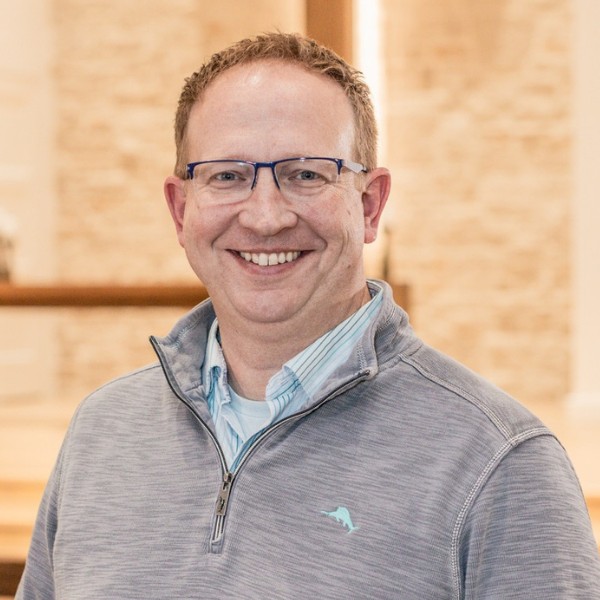How long, O Lord? Will you forget me forever?
How long will you hide your face from me?
How long must I take counsel in my soul and have sorrow in my heart all the day?
How long shall my enemy be exalted over me? (Psalm 13:1-2)
It took forty-nine years, five months and two days, but Roe v. Wade has fallen. The 1992 reaffirming precedent of Planned Parenthood v. Casey is gone along with it. The U.S. Supreme Court released its official opinion—at a time of its own accord and choosing!—in Dobbs v. Jackson Women’s Health Organization. The Court ruled in favor of the State of Mississippi (6-3), and overturned Roe and Casey as well (5-4). When it happened, several of us from NAPC were attending the final day of our denomination’s General Assembly. It was amazing news to receive while members of the EPC from around the country were gathered for worship and prayer to our Lord and King. We rejoiced at the news! All Christians everywhere should rejoice at this news.
First, some reader clarity: These two articles aim to inform and equip Christians. Every pastor has two jobs. Each time he speaks or writes he shepherds the flock, equipping the congregation to live the Christian life (Ephesians 4:12), and/or he proclaims the Gospel of grace to unbelievers with ears to hear (Romans 10:9-10, Mark 4:9). My goal here is more the former than the latter, seeking to help Jesus-followers think through this matter and discern what to do next. This is crucial. In case you haven’t noticed, people seem to be losing their minds. The world thinks everything has been turned upside down, even as we see the Lord providentially turning it right-side up.
So, let’s walk through some background and information. If you’re less interested in that (insert sad face here), feel free to skip to Part 2, which outlines what we should do.
What should Christians think about abortion?
From the earliest days of the faith, Christians uniformly have supported life. Canaanites practiced child sacrifice to Molech. Roman society exposed unwanted infants to the weather, abandoning them for dead. Greeks disposed of undesired pregnancies by drinking abortive medicinal concoctions. Christians have been the exception from the 1st century onward. Why? Our God is the Author of Life, who has set humanity as the crown of his Creation, made in his image (Genesis 1:26-27). Here in the imago Dei—the image of God—we find the grounding of human dignity and equality. And the God who created all life commands that innocent life not be taken (Exodus 20:13).
If one thing is clear, it is that children are considered a blessing from the Lord, all of them (Psalm 127:3-5). The Bible says over and over again that the unborn are people with body and soul (Psalm 139:13, Jeremiah 1:5, Job 31:15). The first human to recognize Jesus was in fact an unborn child: John the Baptist, while still in Elizabeth’s womb (Luke 1:39-45). The Gospel message itself is a message of God rescuing his children to life when all were destined for death (Ephesians 2:1-10). Abortion is death to human life—the weakest, the voiceless, the ones most lacking power—and as such it does not fit with Christian faith. Christians must oppose abortion as conflicting with the Gospel and the character of our God. For more information, check out the EPC’s position paper here.
What was the legal rule from Roe and Casey?
Prior to the US Supreme Court decision in Roe, there was no constitutionally protected right to abortion in America. States restricted abortion (or not) to any extent they chose. Roe changed this by recognizing a federal, constitutional right to abortion in an (allegedly implied, yet nebulous and unstated) constitutional right to privacy and autonomy. From that point forward, states were limited to restricting abortion only after the point of “viability,” defined as the point at which the child could survive if it were taken outside of the womb. As a result, some states have laws curtailing abortion after 20-24 weeks, some have other restrictions, but still others maintain access to elective abortion until much later in the pregnancy, even up to delivery.
What has Roe meant for unborn life in America?
It has been a tragic miscarriage of justice resulting in death to millions. At the dawn of Roe, the United States became one of only 7 countries allowing elective abortions after 24 weeks. The six others are North Korea, Vietnam, China, Singapore, The Netherlands and Canada. Iceland boasts of eliminating Down’s syndrome from the country, and yet they have accomplished this almost completely through elective abortion after reviewing genetic testing results. This practice has grown in America over recent decades.
There have been an estimated 63 million abortions performed in America since the decision in Roe—10x the Holocaust, or enough people to fill the ‘Shoe to capacity about 600 times. Let that sink in, swallow hard, and keep reading … In 2019, there were an estimated 900,000 abortions in the U.S. The official reported number was about 630,000, but California, Maryland and New Hampshire elect not to report, driving the actual number significantly higher. Ohio alone reported just over 20,000 abortions in 2019. Approximately 6% of abortions are conducted after 13 weeks of pregnancy, in the second or third trimester. This is long after the baby has organs, a functioning circulatory system, and a beating heart (6 weeks), and about the time the lemon-size child has fingers, toes and even hair follicles (13 weeks). In America under Roe, death has reigned even though the Author of Life has come (John 1:1-5). This has been an evil stain on our republic akin to Dred Scott v. Sanford (holding that even free blacks aren’t citizens) and Plessy v. Ferguson (upholding “separate but equal”). And lest we forget, abortion disproportionately impacts unborn minority children.
What is the Dobbs case and what does it actually do?
In 2018, the Mississippi legislature passed the Gestational Age Act, banning all abortions after 15 weeks. This was prior to “viability” and therefore in direct conflict with the holdings of Roe and Casey. Jackson Women’s Health Organization challenged the constitutionality of the law in federal court. The law was struck down and again on appeal, moving it to the U.S. Supreme Court in December of last year. The Dobbs draft opinion was leaked to the public some weeks ago—an unprecedented, shocking and sad development intending to cause social unrest and distrust in the very institutions which establish and sustain our country—but I digress. The final opinion, along with concurrences and the dissent can be read here. It’s a collective 213 pages, so here’s the gist:
- The Court determined that the constitutional rationales of Roe and Casey were extremely flawed, having little support, and that a right to abortion was not deeply rooted in our nation’s history and traditions.
- The Court determined there was no broad constitutional right to privacy or autonomy upon which to base a right to abortion.
- On those grounds, the Court held as follows: “The Constitution does not confer a right to abortion; Roe and Casey are overruled; and the authority to regulate abortion is returned to the people and their elected representatives.”
As a result, abortion rights are no longer protected by the federal government. It goes back to the state legislatures, the representatives elected by the people, who can pass their own laws to prohibit, restrict or promote abortion as they collectively choose.
The decision broke largely along judicial philosophy or ideological lines. Justice Alito wrote the opinion of the Court, joined by Justices Thomas, Gorsuch, Kavanaugh and Barrett. Justices Thomas and Kavanaugh each wrote separate concurring opinions, a practice used to highlight something not in the main opinion and possibly to give a signal on their thinking toward future cases. Chief Justice Roberts wrote his own concurrence, agreeing with the judgment to uphold the Mississippi law, but not to overturn Roe and Casey. He sought to chart a middle ground that would chip away at abortion in America over time without upending legal precedent, but no justices from the right or the left chose to join him. Justice Breyer wrote the dissent, joined by Justices Sotomayor and Kagan. For more on the holding, reach out to me here, or check out this helpful overview: TGC – Supreme Court Overturns Roe – Joe Carter.
What does the Dobbs decision not do?
On your social media feed and across the internet (no surprise there), as well as on some cable news outlets, the decision in Dobbs has been misstated and misunderstood. No, abortion has not been banned throughout America. It has simply been sent back to the states. Now, approximately 26 states have laws set to pass or already on the books that will completely ban abortion or heavily restrict it. At the same time, quick math tells us that means nearly half the states (and over half the nation’s population) will likely keep abortion readily available similar to what it was under Roe. Abortion after Dobbs will still be a reality in American life and culture.
In front of the Court, many pro-life groups argued that unborn children are human persons, not merely “potential life” as Roe held. If true (and it is), unborn children would receive protections of all human persons, entitled to “life, liberty and the pursuit of happiness.” The Court chose not to go that far in Dobbs. And so, nothing in Dobbs would prevent the federal government from taking action to promote or support abortion in America. Congress could propose laws to require access to abortion services in all 50 states, effectively reinstating the concepts under Roe but now through the legislative process. The federal government could seek to make funding for state programs (like Medicaid, public school programs and others) conditioned upon maintaining access to abortion. Recently, some pro-abortion elected officials have called for abortion clinics to be given space on federal lands. All this is to say, the labor for the Lord of protecting unborn life must continue. We cannot pause and we must not shrink back. Those who lack a voice yet still bear the image of God depend upon pro-life Christians.
In summary, the Court’s decision in Dobbs is an historic, constitutional reversal of what was a marked evil in our society. It is not perfect, however, in that it does not do all we in the Christian, pro-life community might have hoped to see. But, it could have gone quite differently, as it did for nearly 50 years. Importantly, this decision removes a sinful stain from our nation’s history—one that will save many lives in the years ahead. For that, we should sing praises to our sovereign King. At the same time, we should still join the Psalmist in asking “How long, O Lord?” until God vanquishes all evil from this world, including abortion, when he returns in glory (Revelation 21 & 22).
Praising our great God along with you,
Pastor Ken

